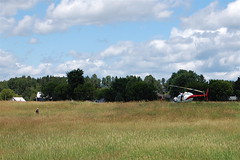On ringneck snakes, difficult species and expertise
Mike Fedzen writes to damn the Ringneck Diary — my abortive attempt to chronicle our attempts to keep Southern Ringneck Snakes (Diadophis punctatus punctatus) in captivity in 2003 — with faint praise:
I found your little project with ringneck snakes doing an internet search. It was interesting, a little.
You made it seem too difficult to keep ringneck snakes, that’s for sure. I’ve worked with ringneck snakes for over 10 years … I am basically a professional. Basically. I have bred them, and kept many many specimens successfully. My longest kept specimen was an almost 10 year albino northern ringneck snake captive.
You picked southern ringneck snakes. In my experience, they are EASILY the most easily kept sub-species. They feed on worms, FISH, frogs, lizards, snakes, and will switch onto mice easier than you can imagine. Try guppies if you don’t have worms. Southern ringneck snakes in my experience have the largest menu out of all sub-species. I’ve gotten many specimens on mice scented with fish/worms/frogs … basically anything with slime.

